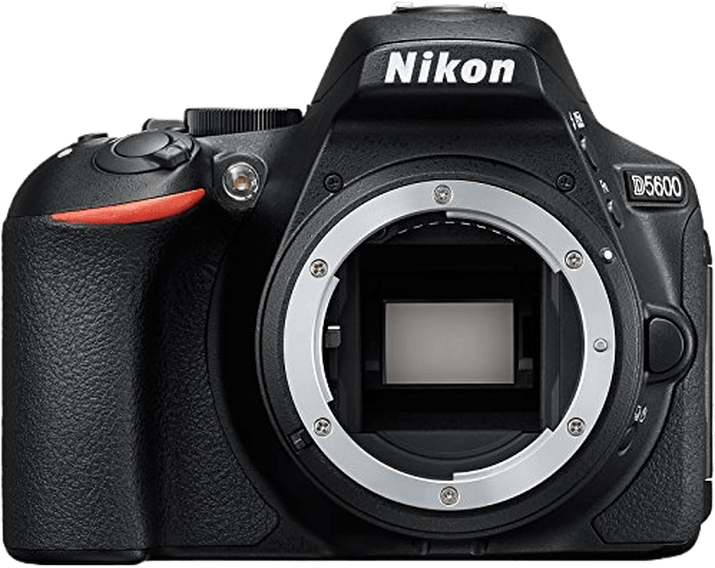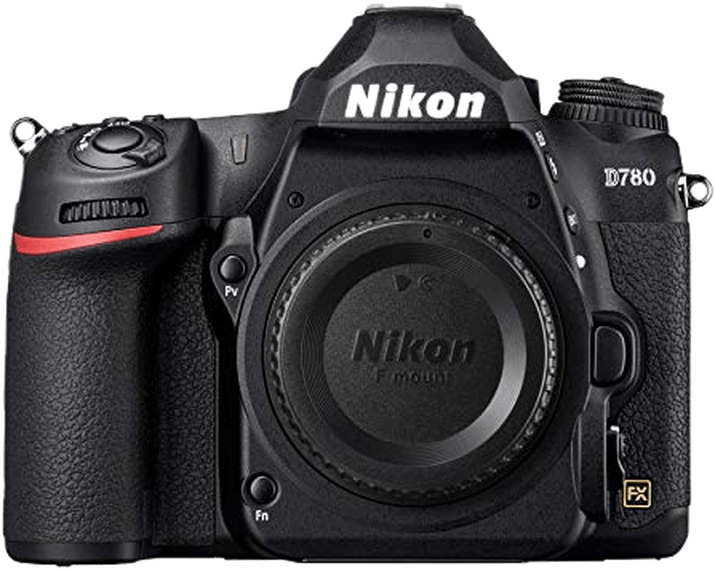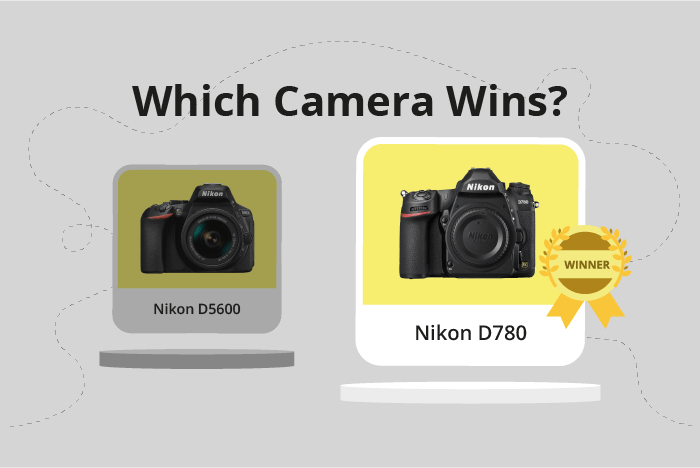Nikon D5600 vs D780 Comparison
Nikon D5600

Nikon D780

The Nikon D780 emerges as the winner with a score of 81/100, while the Nikon D5600 scores 66/100. Both cameras are DSLRs and share similarities in their specifications. Launched in 2020, the D780 has newer technology and a higher launch price of $2299 compared to the D5600’s $700 in 2016. The D780’s superior performance can be attributed to its advanced features and capabilities.
On the other hand, the Nikon D5600 is lighter, weighing 465g, and smaller with dimensions of 124 x 97 x 70mm. This makes it more portable and convenient for casual photographers. However, the Nikon D780’s higher score reflects its overall better quality and performance, making it more suitable for professional users.
Nikon D5600 vs D780 Overview and Optics
The Nikon D780 wins the optics comparison with a score of 77/100, while the Nikon D5600 scores 65/100. Both cameras share certain specifications, such as a CMOS sensor, no image stabilization, and a Nikon F lens mount. However, the D780 has a full-frame sensor, while the D5600 has an APS-C sensor. Both cameras also have different processors, with the D780 using the Expeed 6 and the D5600 using the Expeed 4.
The D780 outperforms the D5600 with its 25-megapixel resolution, compared to the D5600’s 24.2 megapixels. The D780’s shooting speed of 12 frames per second is significantly faster than the D5600’s 5 frames per second. Additionally, the D780’s sensor has a higher DXOMARK score of 97, compared to the D5600’s score of 84. These factors contribute to the D780’s superior image quality and performance.
The D5600, however, does have some advantages over the D780. Its APS-C sensor and Nikon F DX lens mount make it compatible with a wider range of lenses, offering more versatility for photographers. This could be beneficial for those who already own Nikon DX lenses or are looking for a more affordable lens option.
Considering the differences in specifications, the Nikon D780 is the better choice for those seeking superior image quality, higher shooting speed, and a full-frame sensor. The Nikon D5600, on the other hand, offers more lens compatibility and may be more suitable for photographers on a budget or those who prioritize versatility in their lens options.
Nikon D5600 vs D780 Video Performance
The Nikon D780 takes the lead in video capabilities with a score of 91/100, outperforming the Nikon D5600, which scored 70/100. Both cameras share some common video features, such as having built-in time-lapse functionality. However, the D780 excels in several aspects that make it a superior choice for videography.
One significant advantage of the Nikon D780 is its 4K video resolution, which is a considerable improvement over the D5600’s Full HD resolution. This higher resolution provides more detailed and sharper videos, with the D780’s max video dimensions being 3840 x 2160, compared to the D5600’s 1920 x 1080. Furthermore, the D780 offers a higher max video frame rate of 120fps, doubling the D5600’s 60fps. This increased frame rate allows for smoother and more professional-looking videos, as well as enabling slow-motion capture.
There are no specific areas where the Nikon D5600 outperforms the D780 in terms of video capabilities. The D780’s higher score reflects its superior video features, making it a more suitable choice for users focused on videography.
Considering the significant differences in video capabilities, the Nikon D780 emerges as the clear winner in this comparison. Its 4K resolution and 120fps frame rate provide users with higher quality videos and greater creative possibilities. While the Nikon D5600 is still a reliable camera for casual video use, the D780’s superior video features make it the better option for those seeking exceptional video performance.
Nikon D5600 vs D780 Features and Benefits
The Nikon D780 emerges as the winner in the feature comparison, scoring 87 out of 100, while the Nikon D5600 scores 72 out of 100. Both cameras share several specifications, such as a 3.2-inch screen size, touchscreen functionality, flip screen, absence of GPS, and the presence of WIFI and Bluetooth connectivity.
The D780 outperforms the D5600 in screen resolution, boasting a remarkable 2,359,000 dots compared to the D5600’s 1,037,000 dots. This higher resolution offers users a clearer and more detailed display, enhancing their overall experience when reviewing images and navigating the camera’s settings.
On the other hand, the D5600 still has its merits despite the lower feature score. It is important to note that the cameras share several key features, ensuring that the D5600 is still a capable and reliable option for photographers. Moreover, the D5600 might be more suitable for users who prioritize affordability and a more lightweight design.
Taking these factors into account, the Nikon D780 stands out as the superior camera in terms of features, providing a higher screen resolution that significantly enhances user experience. The D5600, however, remains a viable option for those who prefer a more budget-friendly and lightweight camera without sacrificing essential features. Ultimately, the choice between these two cameras depends on individual preferences and priorities in terms of performance, price, and design.
Nikon D5600 vs D780 Storage and Battery
The Nikon D780 outperforms the Nikon D5600 in storage and battery with a score of 97/100, a significant 54-point lead over the D5600’s score of 43/100. Both cameras share compatibility with SD, SDHC, and SDXC memory cards, but the D780 supports the faster UHS-II standard, while the D5600 is limited to UHS-I.
A major advantage of the D780 is its dual memory card slots, allowing for more storage capacity and backup options. The D5600 has only one slot. Furthermore, the D780 boasts an impressive battery life of 2260 shots, more than double the D5600’s 970 shots. The D780 also features USB charging, a convenient option absent in the D5600.
The D5600 doesn’t hold any advantages in storage and battery over the D780. The D780’s superior storage capabilities, extended battery life, and USB charging functionality make it the clear winner in this category.
Nikon D5600 vs D780 – Our Verdict
Are you still undecided about which camera is right for you? Have a look at these popular comparisons that feature the Nikon D5600 or the Nikon D780:

